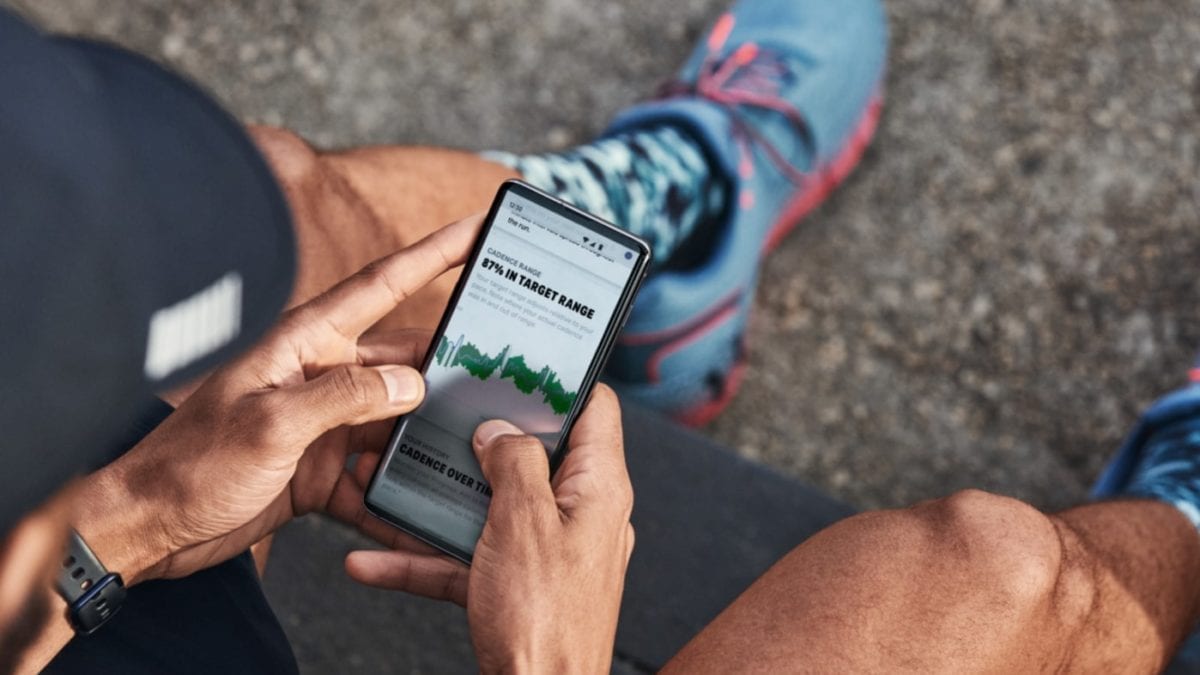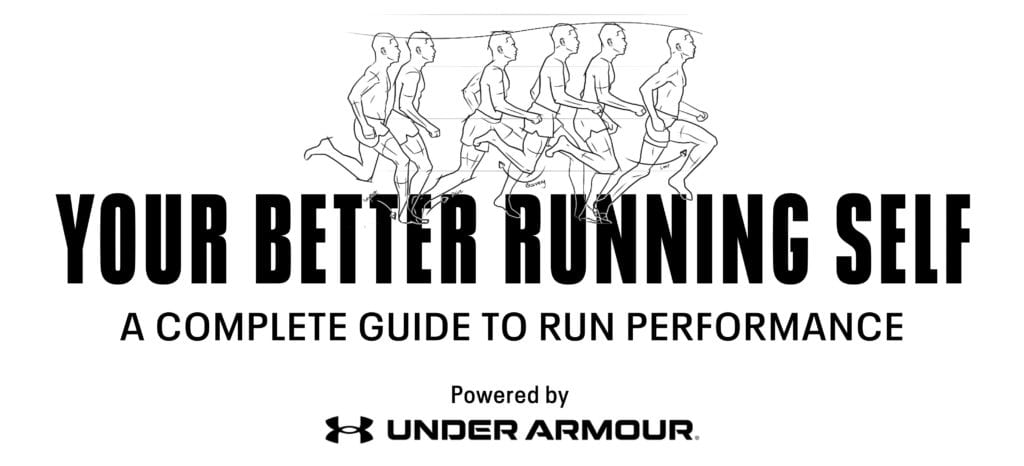Training your form
Whether you've been in the sport for years or you're a running newbie, you should consciously work on your form every day
 Photo by:
Under Armour
Photo by:
Under Armour
Proper form in running is key for success, and it is often overlooked. Many of us focus on pace and distance, but we forget to consider how our form could be holding us back. This is one thing that makes running so different from other sports. If a basketball player consistently misses free throws, they seek help to develop proper shooting form. But when we, as runners, find ourselves breaking down in the final 10 kilometres of a marathon or running out of gas with 200 metres to go on the track, we chalk it up to poor fitness, bad pacing or a lack of training, when in reality, working on your running form could solve many of our problems.
When to change your form
“No one is really taught how to run properly,” says Rich Hesketh, Under Armour trainer and a former Canadian national decathlon champion. “You just kind of assume you’re doing it right and go out for a run. But in reality, people aren’t even taught how to walk properly.”
After retiring as a decathlete, Hesketh transitioned his focus to being a professional athletic development coach for various professional athletes, teams, programs and universities. He says that to optimize running form, you need to address the structural imbalances and weaknesses, adding that a runner may need “pathological movement patterns” in their form – and what he means by this is movements that, when repeated over and over, will lead to injury.
Injuries often occur when your aerobic training progresses faster than the strength of your bones, joints, muscles and ligaments. “If you think about running a 10K, you’re taking 8,500 to 9,500 steps throughout that run,” he says. “If your foot rolls in and your knee collapses with every step, eventually you’re going to get injured.” Poor running form can be extremely detrimental to a runner’s body and health, and Hesketh says correcting form and building in proper progression in workouts should be a priority for all runners.
David Joseph, Under Armour runner and founder of the YAMAJO Run Crew in Montreal, says, “in running, you want to be efficient and you want to prevent injuries, and it could also just be that as a runner, you want to take it to the next level and you’re trying to figure out all of the little things that could help you do that. I think that’s when changing your form can be a good thing and something to look into.”
Finding errors in your form
It’s easy to decide to change your form, but how are you supposed to do it? Hesketh says to start with walking properly first. “Learn that gait position — what I call an ‘engaged gait,’” he says. “When you contact the ground, you know that your foot is directly underneath your hip. This way, you’re establishing a solid and strong motor pattern.”
He recommends that runners enlist the help of someone who knows what a good mechanical running stride looks like. Go to a track with that person (likely a coach) and have them watch you run and tell you what you’re doing well and what needs to be fixed or altered.
Joseph adds that runners looking to change their form can’t expect things to click right away. “You see other runners and it’s easy to compare and want to change everything,” he says. “But that’s not something that can happen overnight.” Joseph says this is a process that should be done slowly.
“Your body is going to have reactions to the new movements,” he says. “You need to make sure you’re doing it right.”

Drills to improve your form
When it comes to drills for running form, Joseph takes a unique approach. Instead of a physical drill, he recommends a mental one: practising mindfulness. “I find in running, you get very focused and into completing the workout within the pace that you set for yourself.” If pace is a priority in a workout, Joseph says runners will lose focus and their form will deteriorate as they try to maintain their goal speed.
“I like to really preach mindfulness and thinking about these things while you’re running. I know it’s not always easy to think about your form, your posture and everything, but when you focus on all the knick-knacks of proper form, eventually it will happen naturally, whereas when you’re not mindful, that’s when you develop bad habits.” Joseph says a runner could go for a run and hit whatever times she wanted, but she won’t realize that she’s reinforcing bad habits in her form.
“That will come back and bite you in training and racing,” he says. “I like to remind my athletes that their form is crucial to prevent injuries and I preach mindfulness as its own drill.” He also suggests including regular, physical drills, which Hesketh also recommends. Hesketh mentions three basic drills to improve your running form, all of which are classics: A, B and C skips.
“A-skips involve skipping while bringing your knees high, above your hip, then driving your legs down. Your posture should be upright posture and your arms driving forward, as when running. The B-skip starts off similarly to the A, with you driving your knee upward, but instead of shooting it back toward the ground, kick your leg out in front of you. Then, you swing your leg back down toward the ground and continue onto the next leg. C-skips are similar to butt-kicks, just with a slight skip between each step, as with the As.
“These can help you to find your foot underneath your hip more effectively, and you can do lots of repetitions with these drills. If you’re doing an A-skip drill for 25 or 30 metres, you’re able to contact the ground — in the proper position — 30 or 40 times,” says Hesketh, adding that the most important part of running technique is foot placement, and the As, Bs and Cs are a great way to find the right point of contact.
“The fastest people in the world use those drills,” he says, “so why wouldn’t anybody else?”
Fixing form with connected fitness apps and running shoes
Everyone is different, and a shoe that works for one runner might not work for the next person. When looking for your next shoe, it’s important to consider its fit, comfort, support and durability. Another aspect to consider is technology.
“I think your gear and shoes have always been super important,” says Joseph,” but now we’re realizing that technology is as important as your shoes and your gear. Technology will give you the best chance to be the best runner you can be every workout and every race.”
Smart shoes are becoming more common in today’s market, such as Under Armour’s suite of HOVR shoes. Paired with the UA MapMyRun™ app, runners with UA HOVR™ footwear can get real-time coaching to improve their form and stride.
Another main part of a runner’s form and technique is their cadence. Cadence is your step rate, normally monitored over a minute. Your stride length dictates your cadence — a longer stride means a lower cadence, and a shorter stride means a higher cadence.
With UA MapMyRun™ and UA HOVR™ shoes, your cadence will automatically be calculated throughout your whole run. Whether you want to receive updates in real time or check in after your run, the app allows you to see how your cadence varies, from when you’re fresh at the start of your run compared to when you become tired near the end.
“I think one of the more valuable but less-used tools on MapMyRun™ is the cadence indicator,” Hesketh says. “That immediate feedback is invaluable, both for pace and for cadence. It’s like having a coach in your ear.”
Joseph says he’s “big on MapMyRun,” because it’s live coaching that can help runners figure out whether they’re running properly. “You’ve got your headset on and as you’re running, if your cadence is not where it should be, the app will tell you right away,” he says. “What ends up happening, you make the switch to fix it without thinking twice. Then, after your run, you get a full set of metrics on everything you could possibly want to know about your run, which is great for training and planning future workouts.”
Always on your mind
Hesketh says form is something runners always need to think about. “It’s not something that you should never get away from. We need to always be falling back on those fundamentals. So you should have a fundamental drill, like the As, Bs and Cs, that is worked into your warmup as part of your daily routine.”
These drills should be done intentionally and with purpose every day, which Joseph stresses. That mindfulness in training will go a long way in helping you work on and better your form. If you stay vigilant and remain conscious of your stride, you’ll reduce the likelihood of getting injured and set yourself up to be the best runner you can be.



